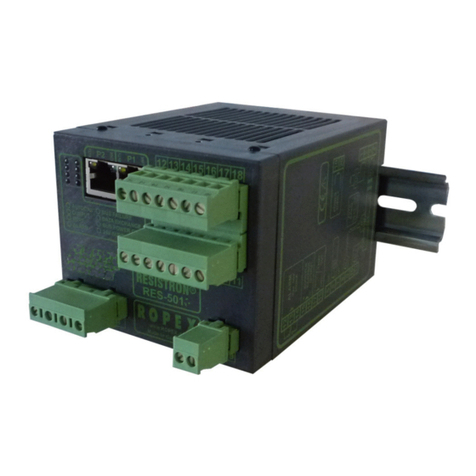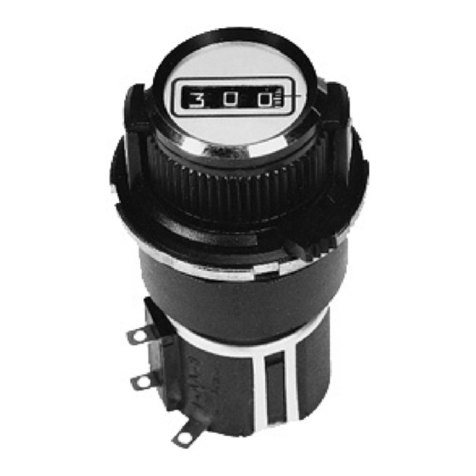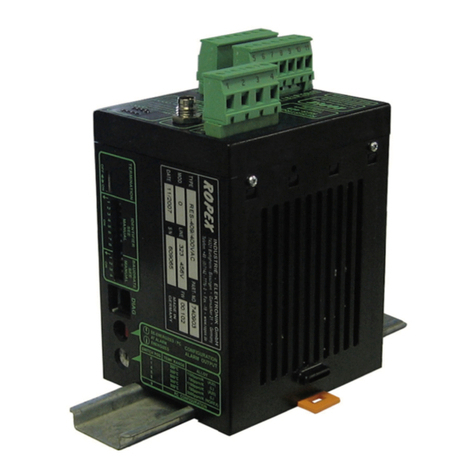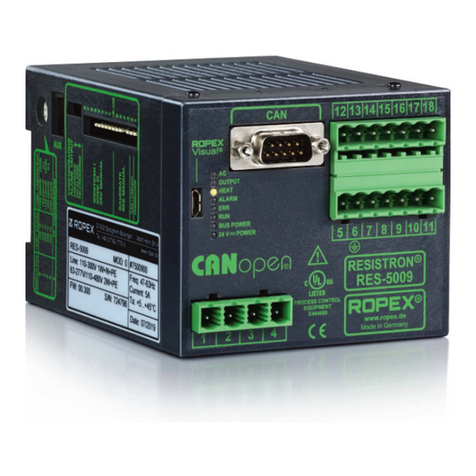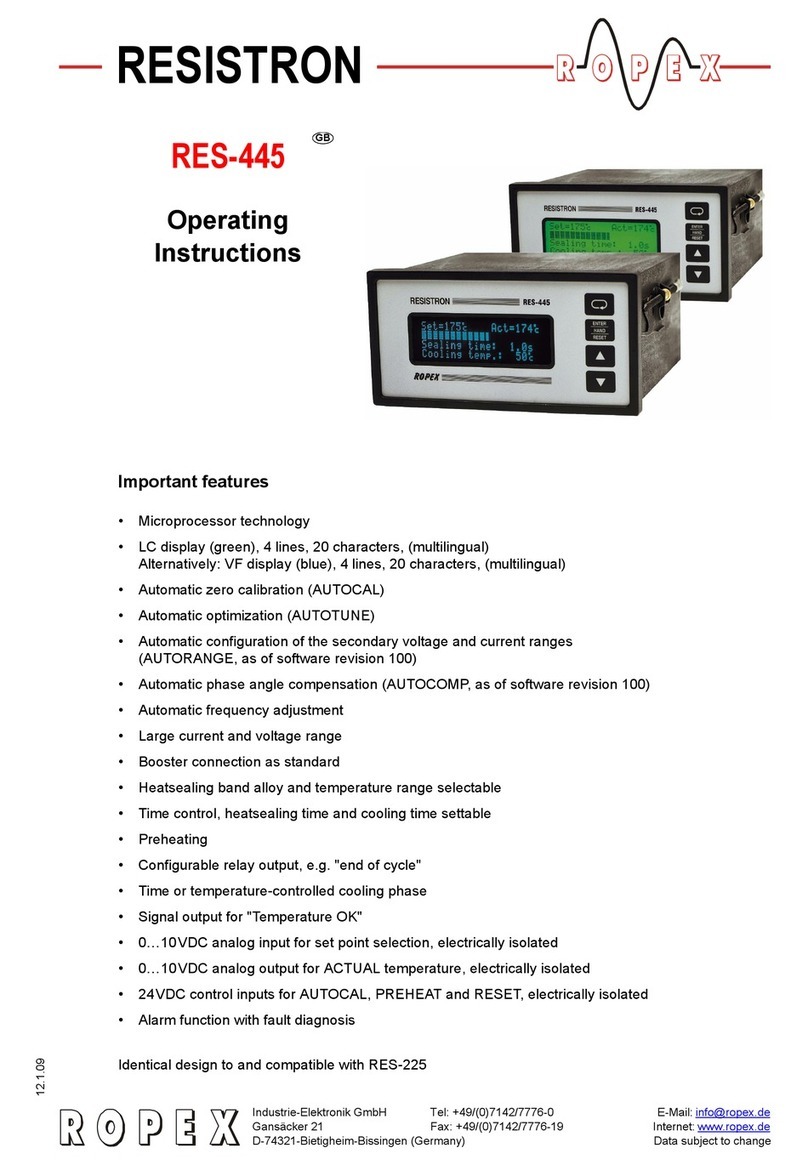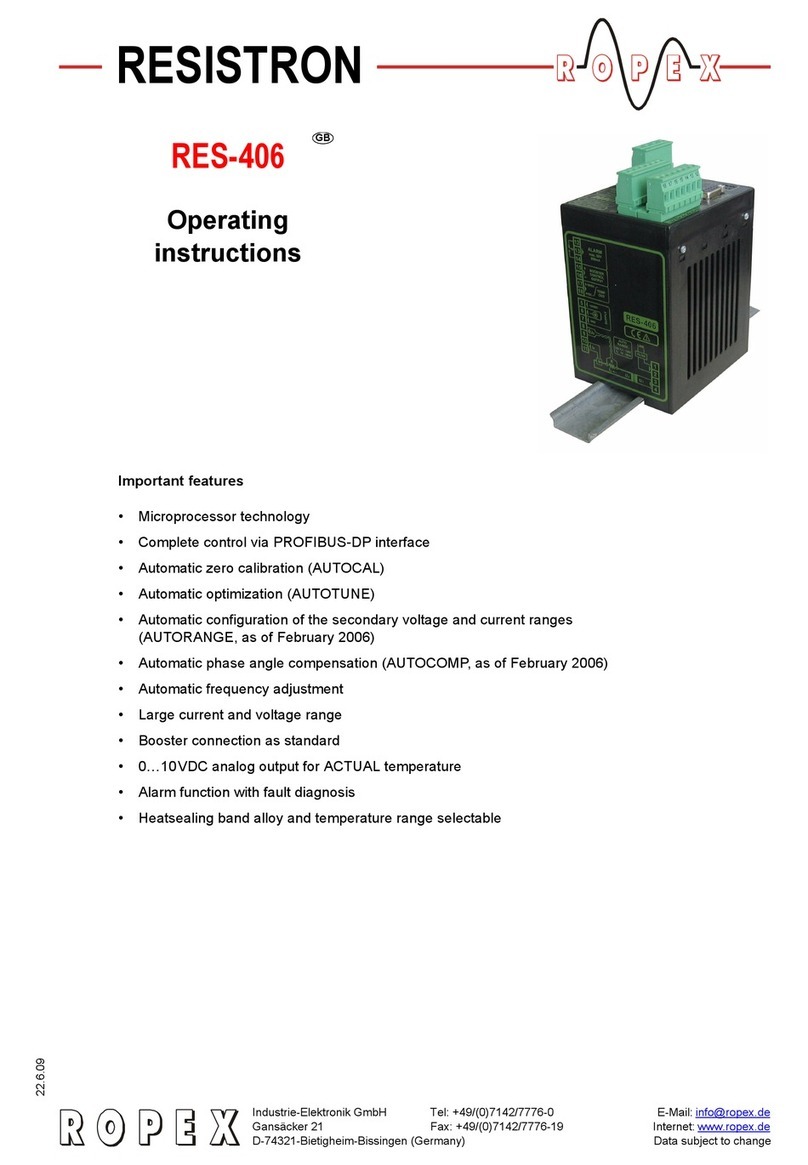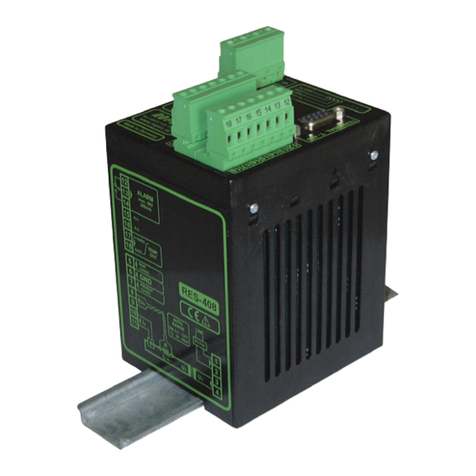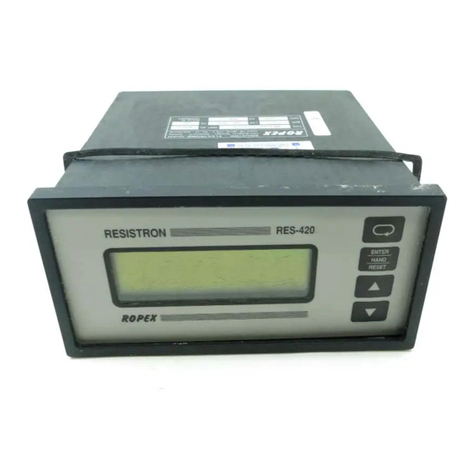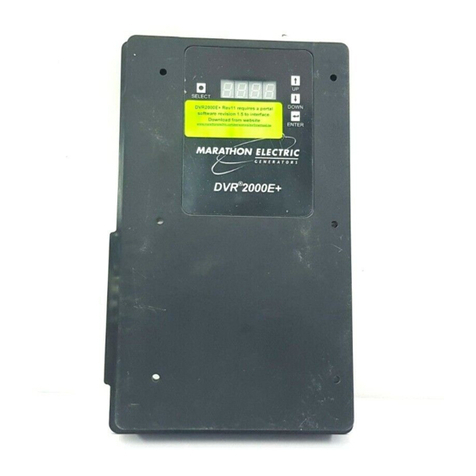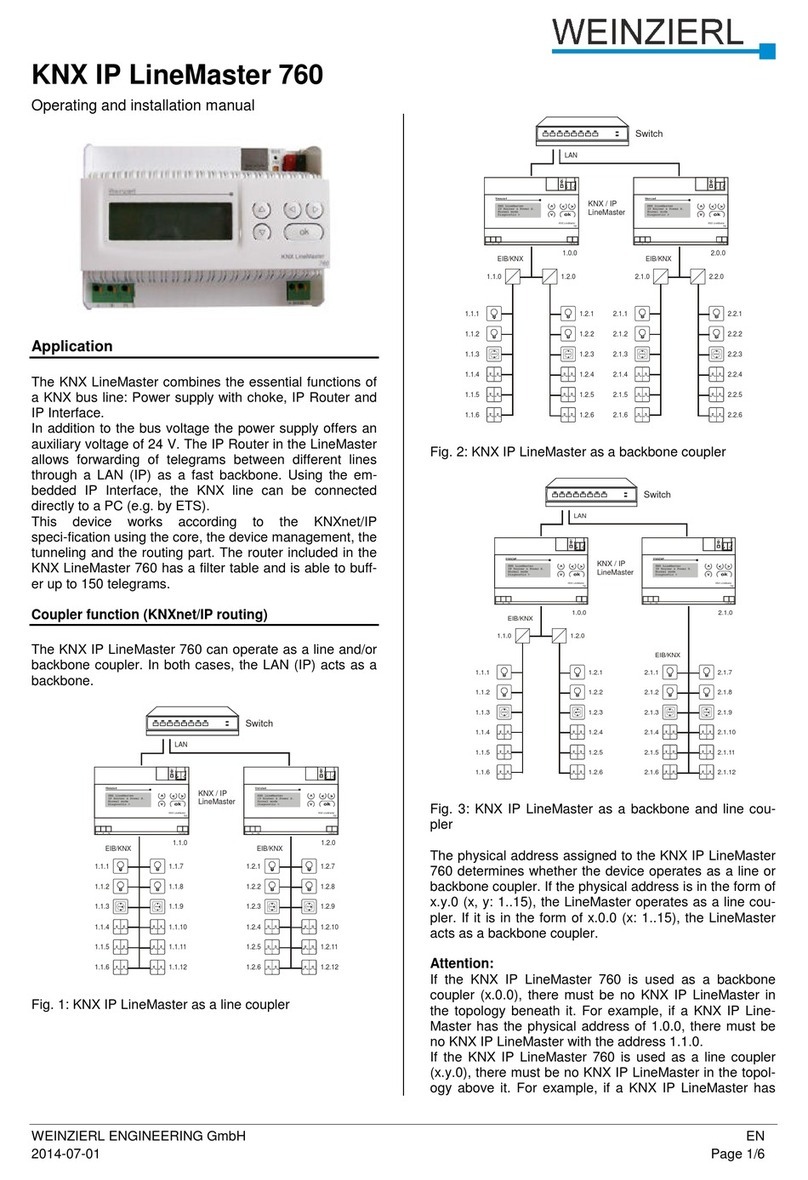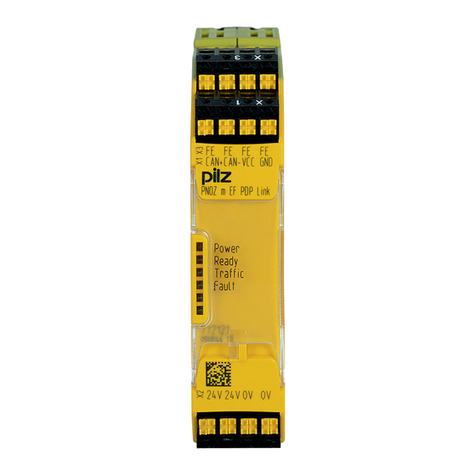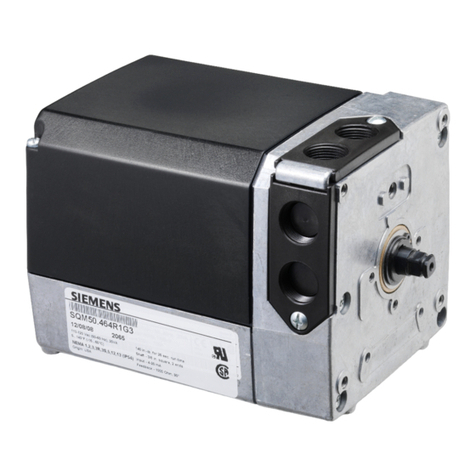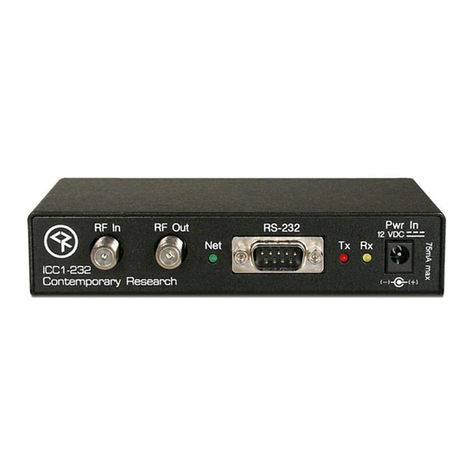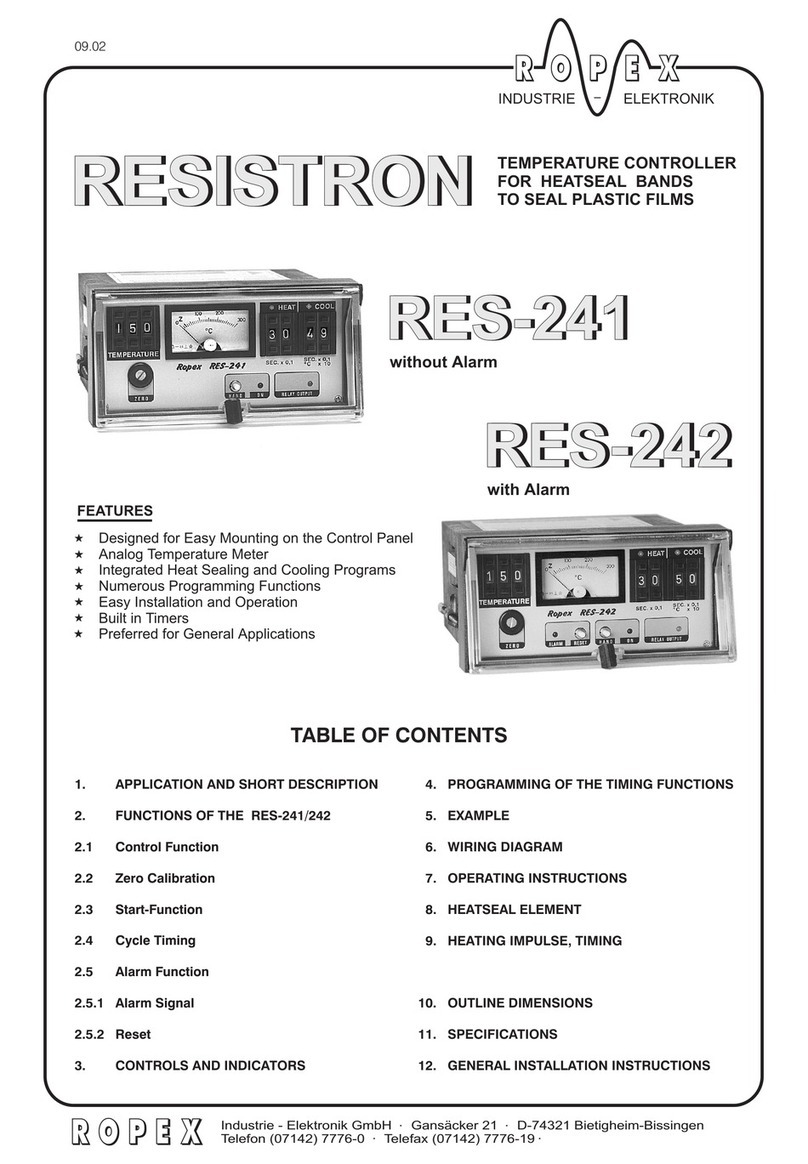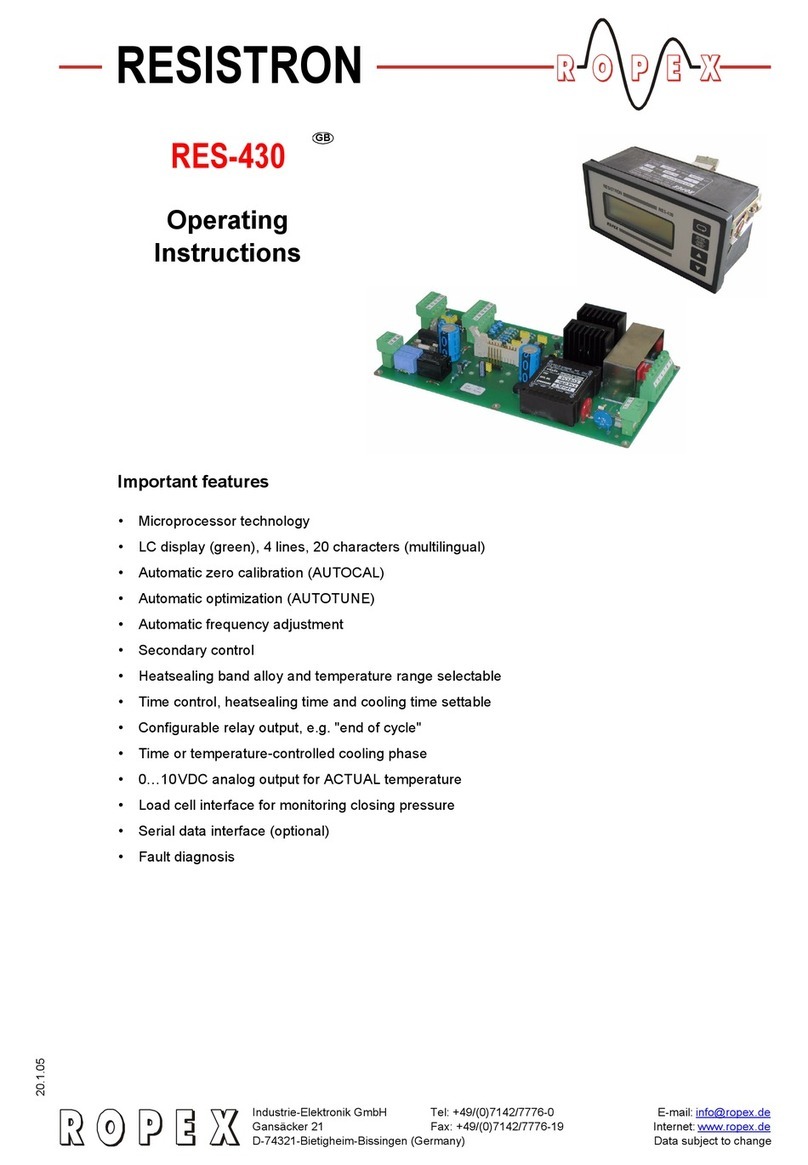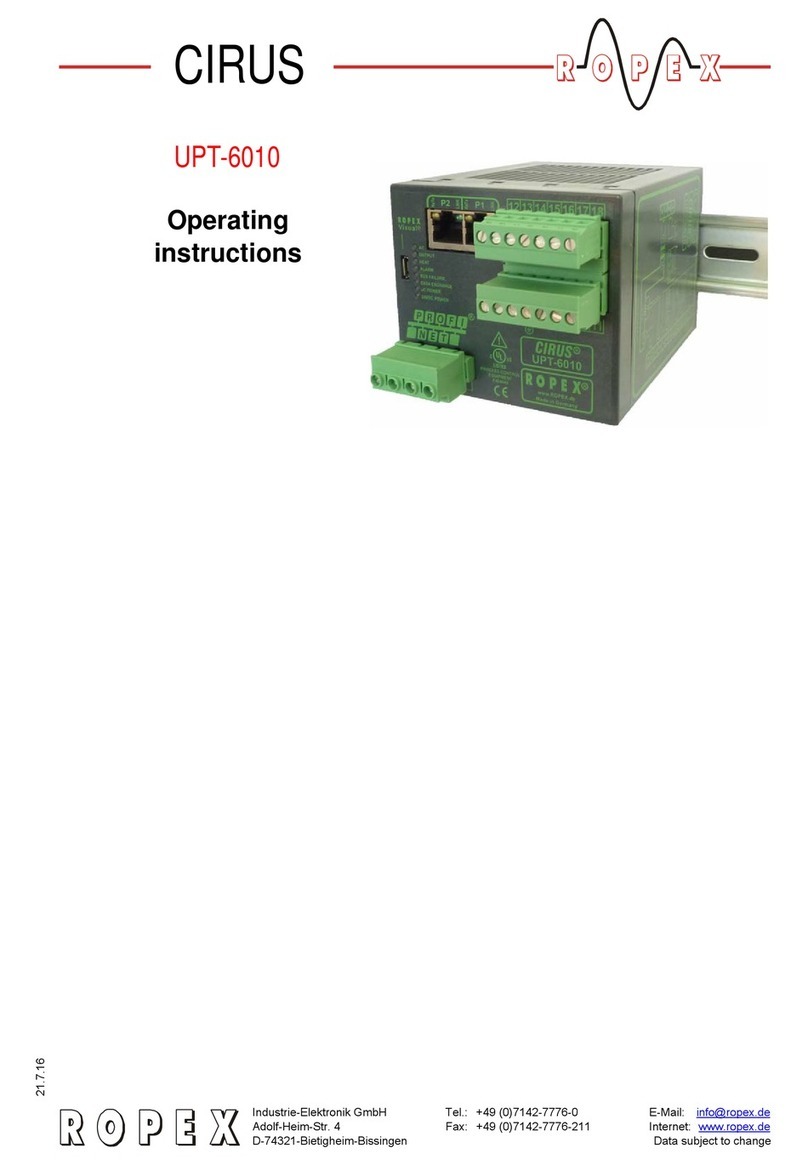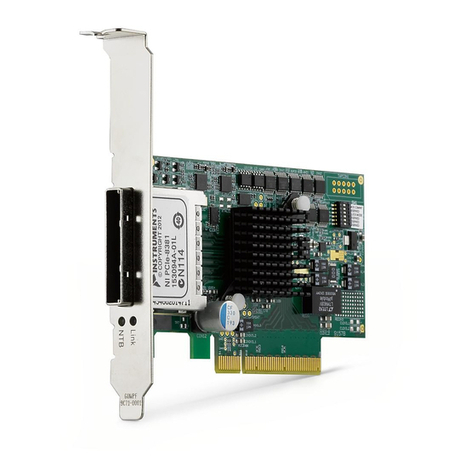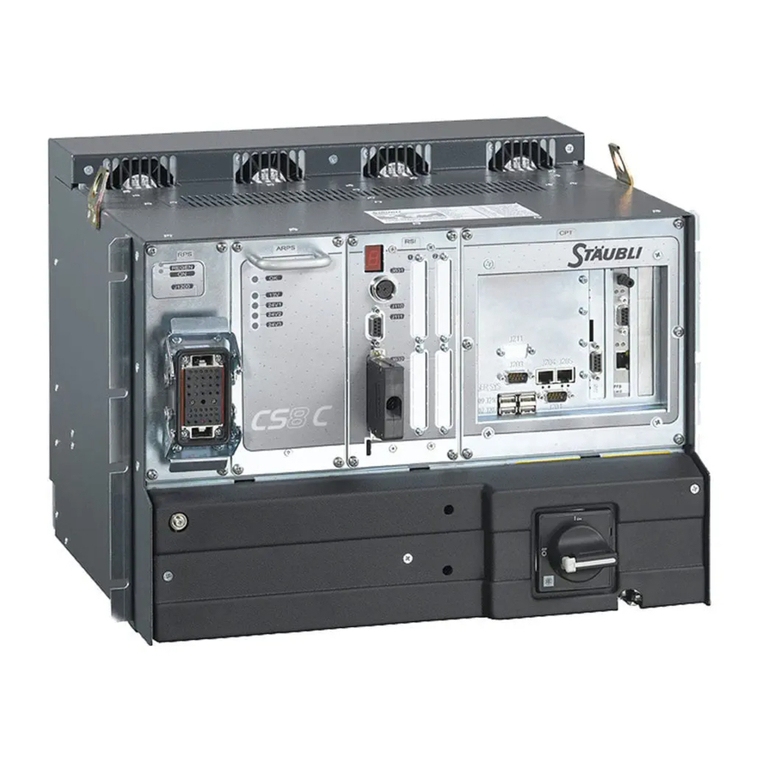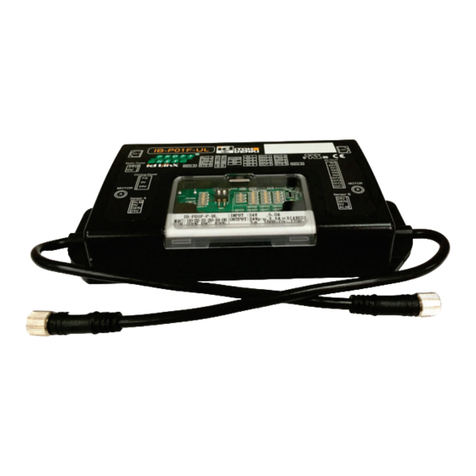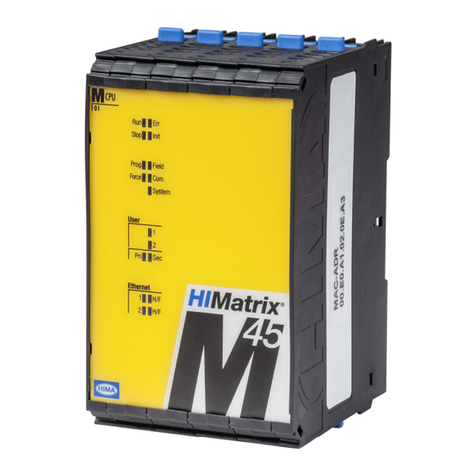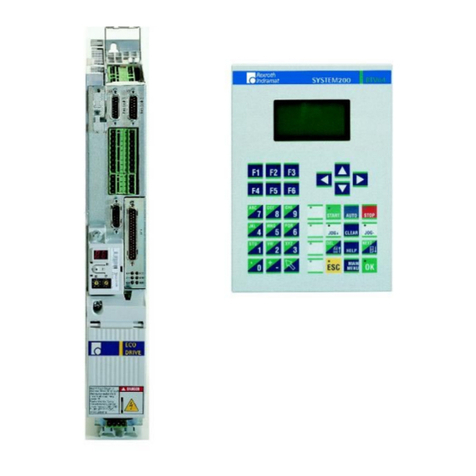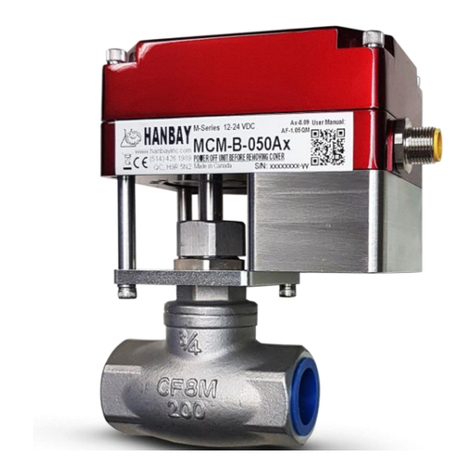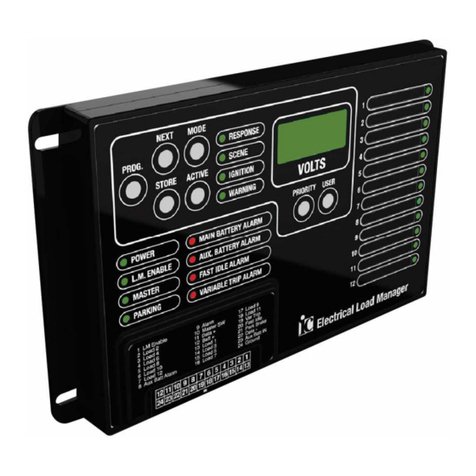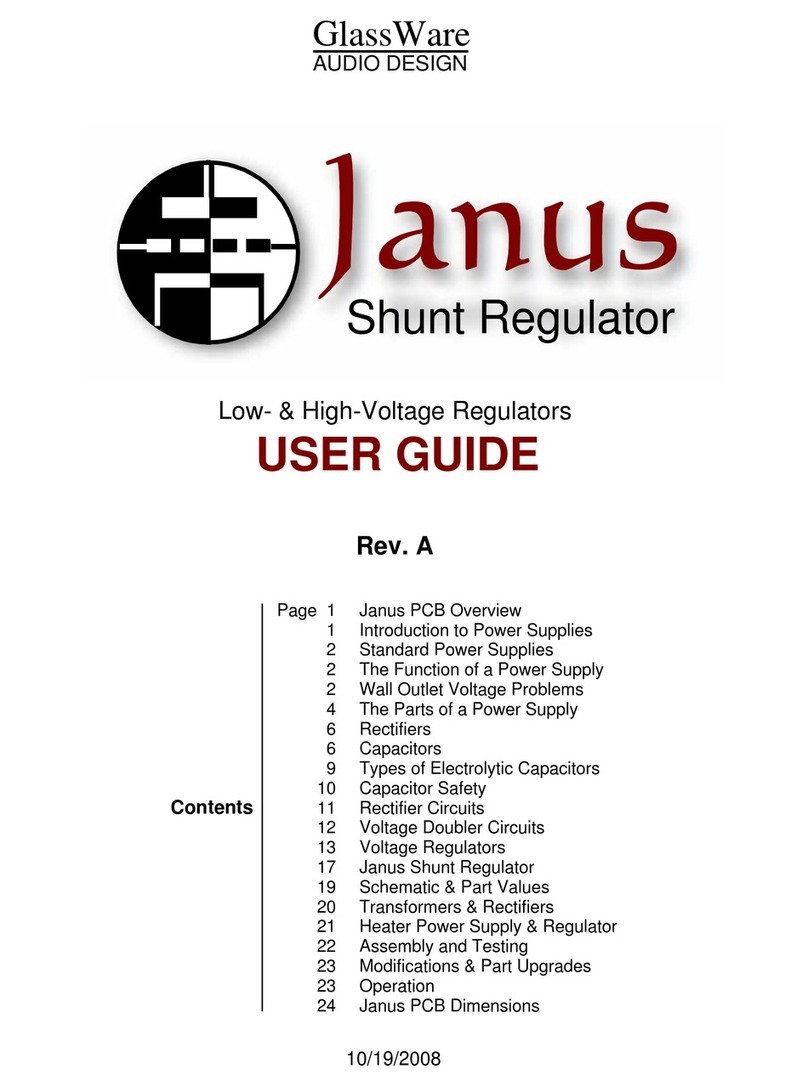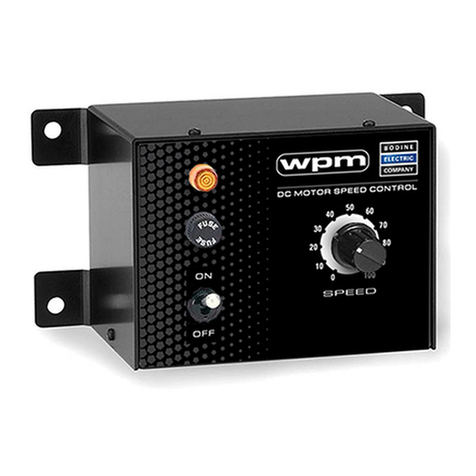
Startup and operation
RES-5010 Page 19
The heatsealing band must be replaced in
accordance with the instructions provided by
the manufacturer.
Each time the heatsealing band is replaced, the zero
point must be calibrated with the AUTOCAL function
while the band is still cold in order to compensate
production-related resistance tolerances. The burn-in
procedure described above should be performed for all
new heatsealing bands.
9.4 Startup procedure
Please also refer to section 1 "Safety and warning
notes" on page 3 and section 2 "Application" on
page 4.
Installation and startup may only be
performed by technically trained, skilled
persons who are familiar with the associated risks
and warranty provisions.
9.4.1 Initial startup
Prerequisites: The controller must be correctly installed
and connected (section 8 "Installation" on page 10).
Proceed as follows to start up the controller for the first
time:
1. Switch off the line voltage and verify that the circuit
is de-energized.
2. The supply voltage specified on the nameplate of
the controller must be identical to the line voltage
that is present in the plant or machine. The line
frequency is automatically detected by the
RESISTRON temperature controller in the range
from 47…63Hz.
3. Link the device master file (GSDML) into the
PROFINET controller (section 10.3), then select
the required parameters, assign a name to the
device, and start the communication.
4. Make sure the "ST" bit is not set.
5. Switch on the line voltage and the 24VDC auxiliary
supply (the order is arbitrary).
6. When the voltage is switched on, the yellow
"AUTOCAL" LED lights up for approximately 0.3
seconds to indicate that the controller is being
powered up correctly. The "BUS FAILURE" LED
(red) lights up as long as no PROFINET
communication is active. It does not go out again
until it detects an active communication.
If the red "ALARM" LED lights up for 0.3s in
addition to the yellow "AUTOCAL" LED when
the voltage is switched on, the configuration of this
controller has been changed by means of the
visualization software (section 10.11
"Diagnostic interface / visualization software" on
page 35). In order to avoid malfunctions, please
check the controller configuration before
continuing the startup procedure.
7. The green "DATA EXCHANGE" LED lights up to
indicate an active PROFINET communication.
8. One of the following states then appears:
9. Activate the AUTOCAL function while the
heatsealing band is still cold by setting the "AC" bit
(AUTOCAL) in the PROFINET protocol
(section 10.4 "Communication protocol" on
page 24). The yellow "AUTOCAL" LED lights up for
the duration of the calibration process (approx.
10…15s). The "AA" bit (AUTOCAL active) is
additionally set and a voltage of approx. 0VDC
appears at the actual value output (terminals
17+18). If an ATR-x is connected, it indicates
0…3°C.
When the zero point has been calibrated, the
"AUTOCAL" LED goes out and a voltage of
0.66VDC (300°C range) or 0.4VDC (500°C range)
appears at the actual value output instead. If an
ATR-x is connected, it must be set to "Z".
If the zero point has not been successfully
calibrated, the "AL" bit (alarm active) is set and the
red "ALARM" LED blinks slowly (1Hz). In this case
the controller configuration is incorrect (
section 9.2 "Controller configuration" on page 16
and ROPEX Application Report). Repeat the
"ALARM" LED "OUTPUT"
LED ACTION
OFF Short pulses
every 1.2s
Go to 9
BLINKS fast
(4Hz)
OFF Go to 9
LIT
continuously
OFF Error code 901
(Error group: 7):
No line voltage /
sync signal
(section 10.2)
Otherwise:
Error diagnosis
(section 10.17)




















